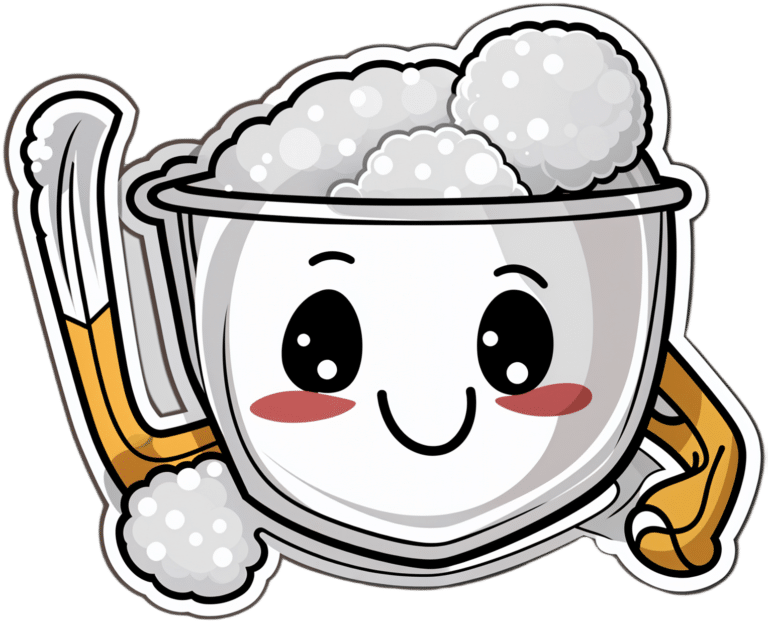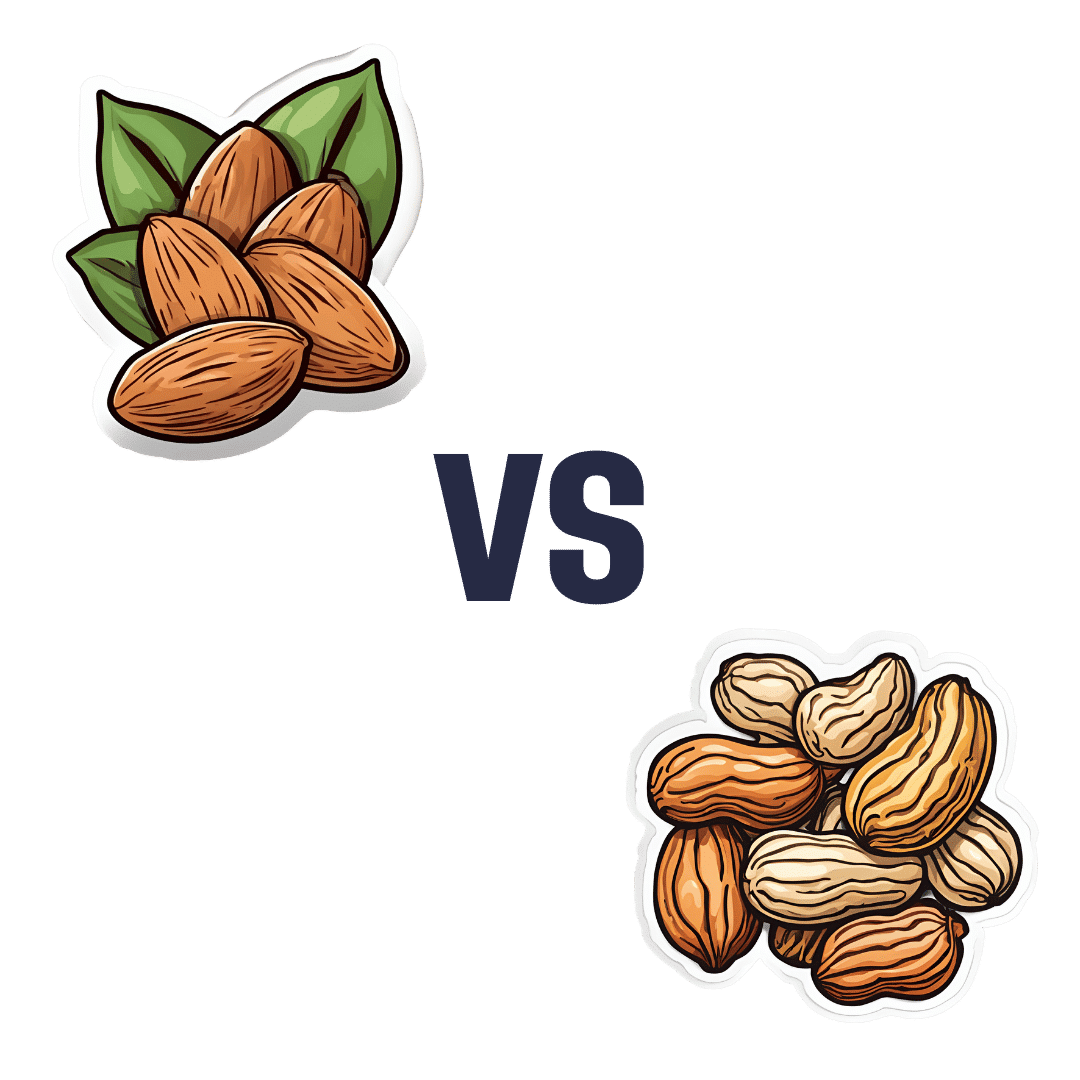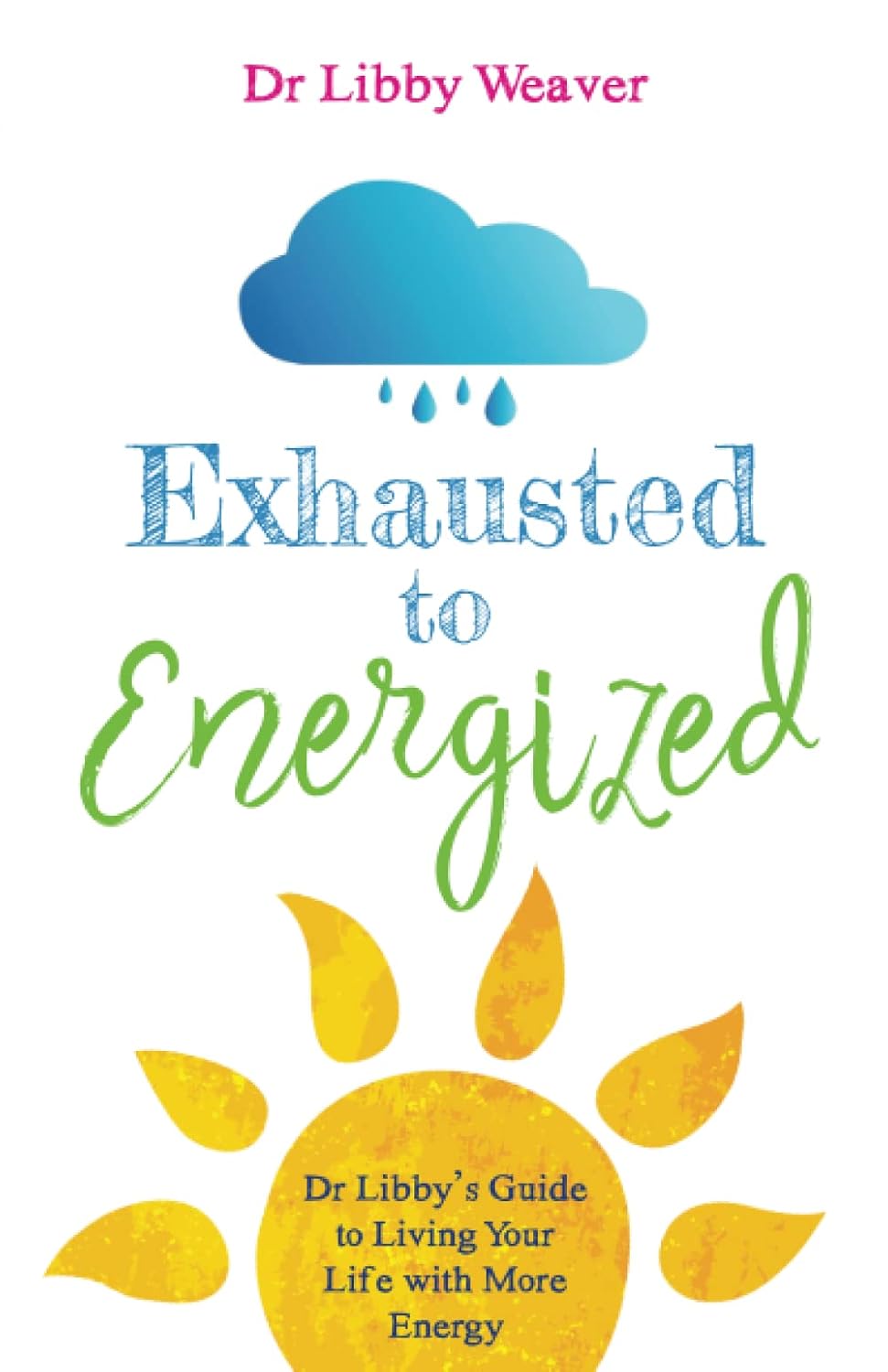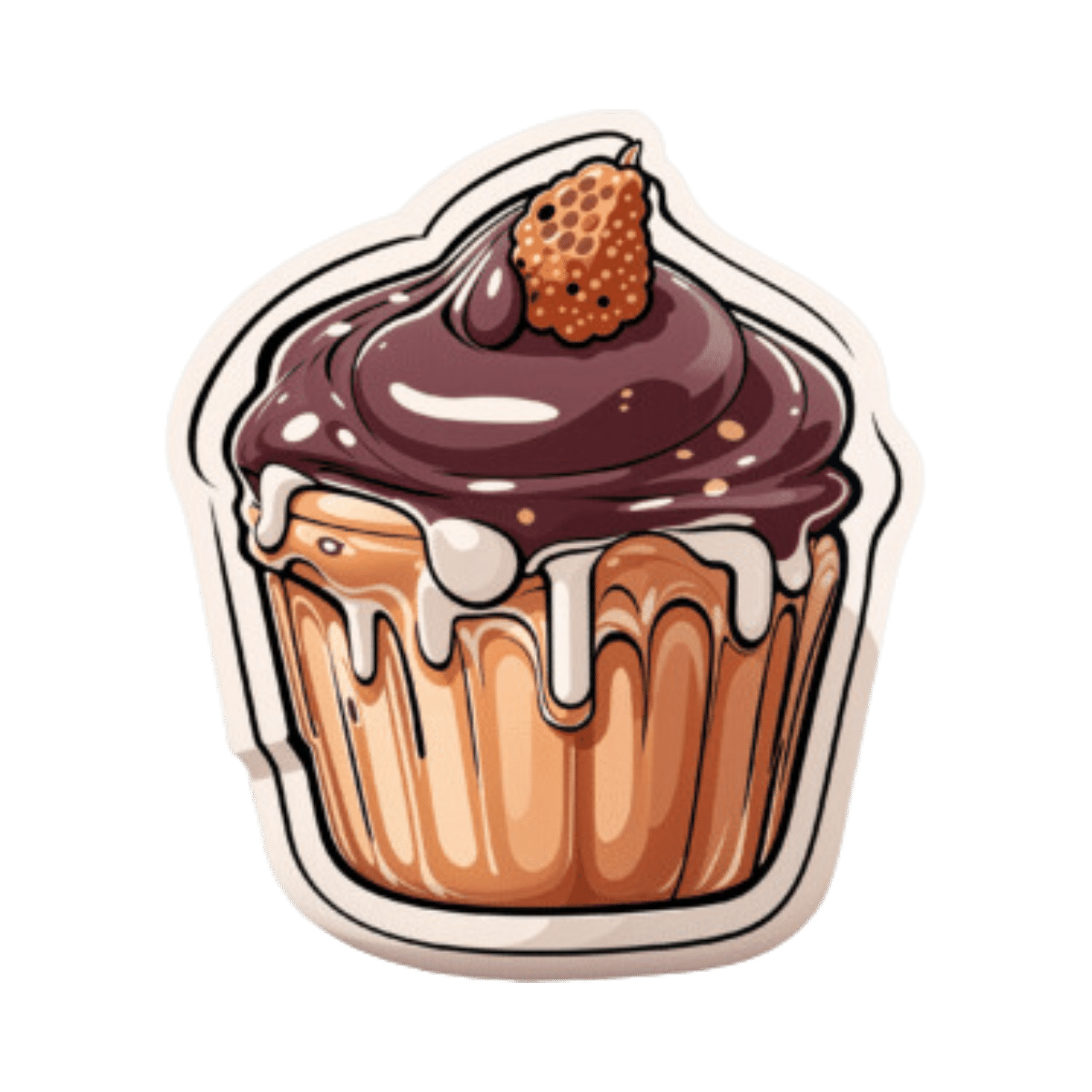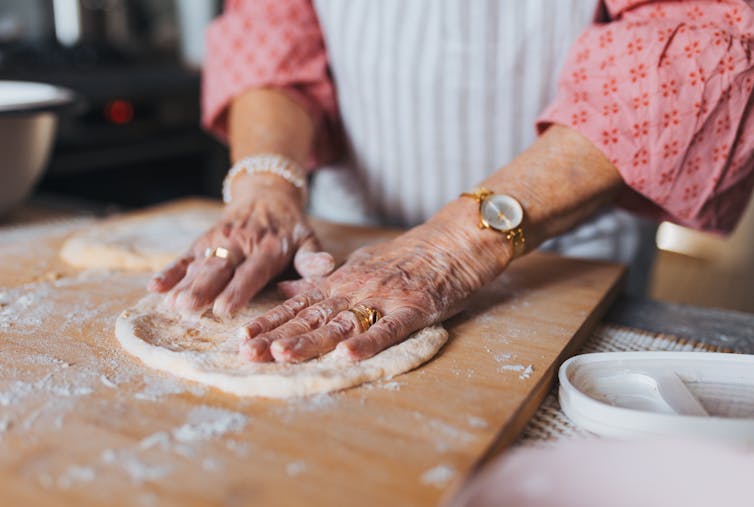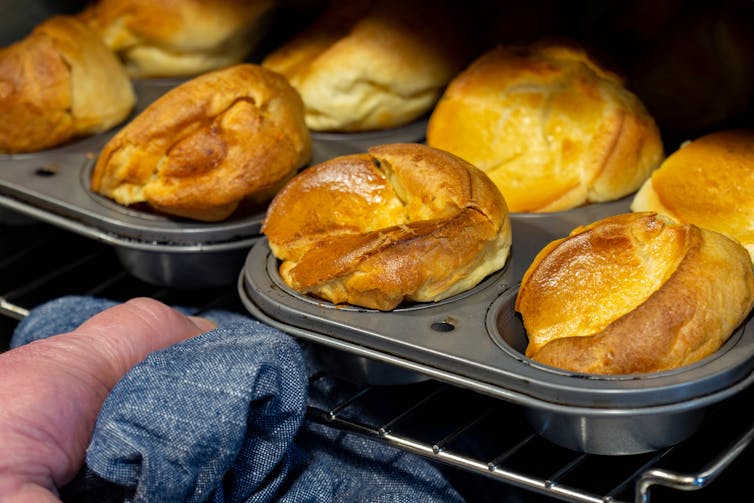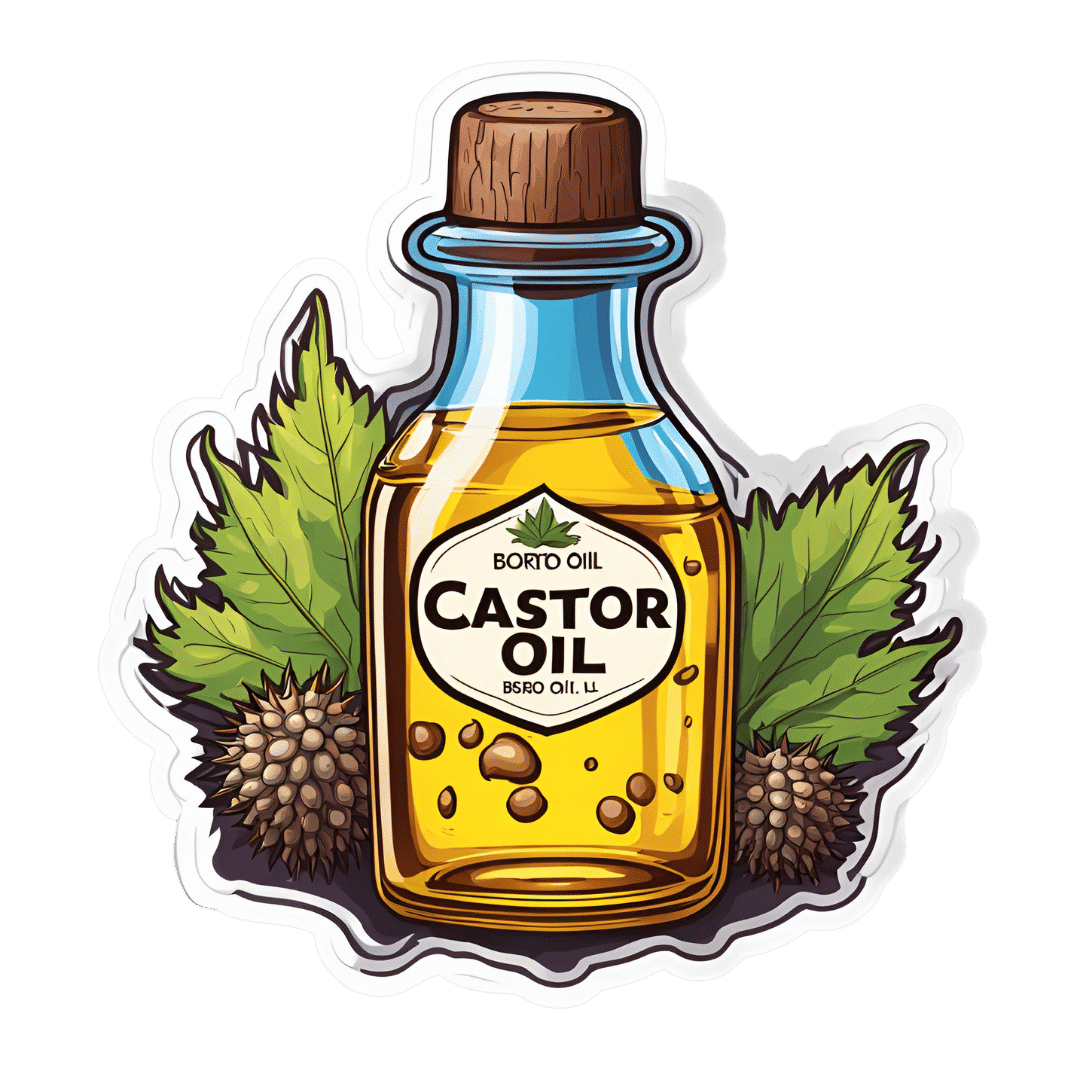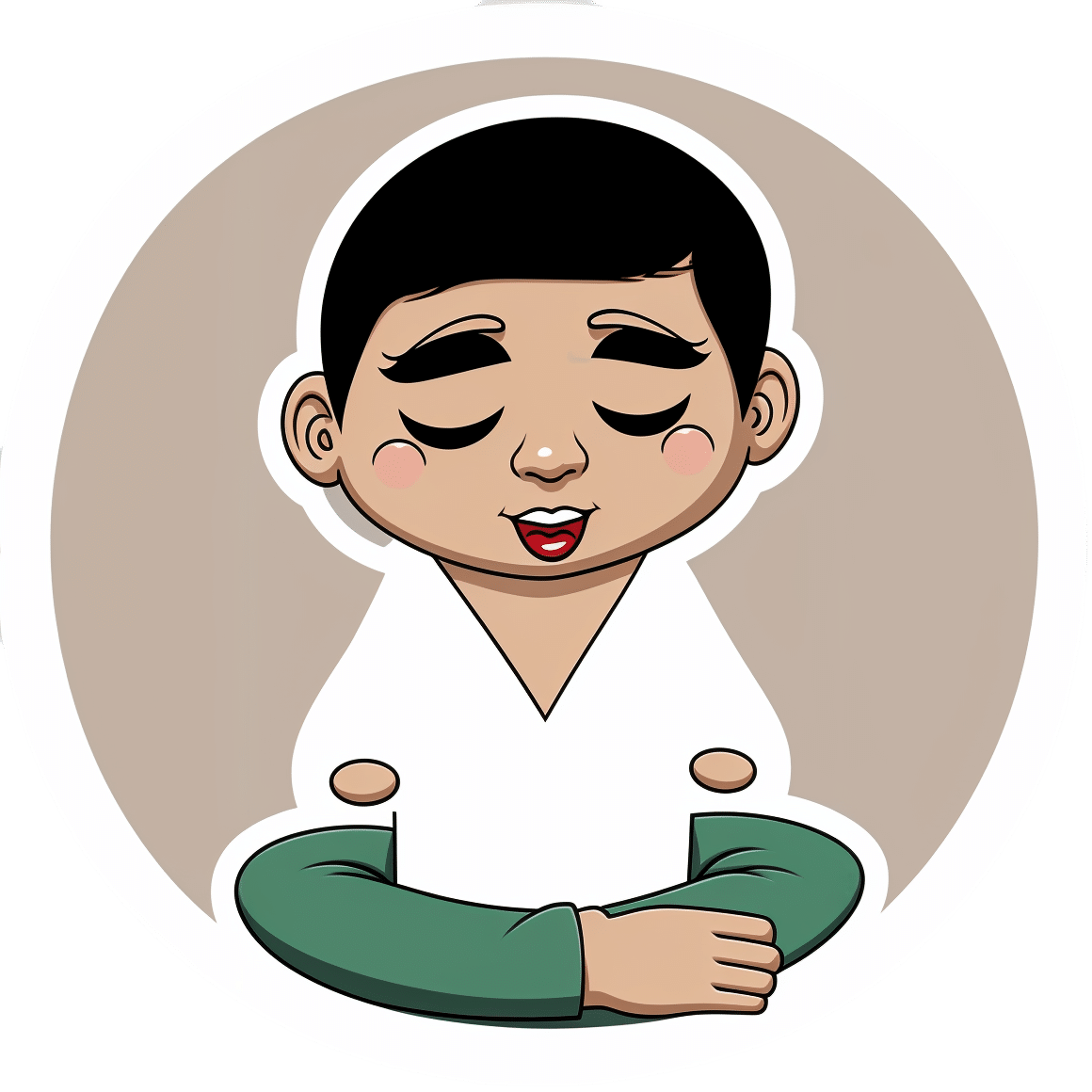
Brown Rice Protein: Strengths & Weaknesses
10almonds is reader-supported. We may, at no cost to you, receive a portion of sales if you purchase a product through a link in this article.
It’s Q&A Day at 10almonds!
Have a question or a request? We love to hear from you!
In cases where we’ve already covered something, we might link to what we wrote before, but will always be happy to revisit any of our topics again in the future too—there’s always more to say!
As ever: if the question/request can be answered briefly, we’ll do it here in our Q&A Thursday edition. If not, we’ll make a main feature of it shortly afterwards!
So, no question/request too big or small
❝I had a friend mention that recent research showed Brown Rice Protein Powder can be bad for you, possibly impacting your nutrient absorption. Is this true? I’ve been using it given it’s one of the few plant-based proteins with a full essential amino acid profile!❞
Firstly: we couldn’t find anything to corroborate the “brown rice protein powder [adversely] impacts nutrient absorption” idea, but we suspect that the reason for this belief is: brown rice (not brown rice protein powder) contains phytic acid, which is something of an antinutrient, in that it indeed reduces absorption of various other nutrients.
However, two things are important to note here:
- the phytic acid is found in whole grains, not in protein isolates as found in brown rice protein powder. The protein isolates contain protein… Isolated. No phytates!
- even in the case of eating whole grain rice, the phytic acid content is greatly reduced by two things: soaking and heating (especially if those two things are combined) ← doing this the way described results in bioavailability of nutrients that’s even better than if there were just no phytic acid, albeit it requires you having the time to soak, and do so at temperature.
tl;dr = no, it’s not true, unless there truly is some groundbreaking new research we couldn’t find—it was almost certainly a case of an understandable confusion about phytic acid.
Your question does give us one other thing to mention though:
Brown rice indeed technically contains all 9 essential amino acids, but it’s very low in several of them, most notably lysine.
However, if you use our Tasty Versatile Rice Recipe, the chia seeds we added to the rice have 100x the lysine that brown rice does, and the black pepper also boosts nutrient absorption.
Because your brown rice protein powder is a rice protein powder and not simply rice, it’s possible that they’ve tweaked it to overcome rice’s amino acid deficiencies. But, if you’re looking for a plant-based protein powder that is definitely a complete protein, soy is a very good option assuming you’re not allergic to that:
Amino Acid Compositions Of Soy Protein Isolate
If you’re wondering where to get it, you can see examples of them next to each other on Amazon here:
Brown Rice Protein Powder | Soy Protein Isolate Powder
Enjoy!
Don’t Forget…
Did you arrive here from our newsletter? Don’t forget to return to the email to continue learning!
Recommended
Learn to Age Gracefully
Join the 98k+ American women taking control of their health & aging with our 100% free (and fun!) daily emails:
-
Reading As A Cognitive Exercise
10almonds is reader-supported. We may, at no cost to you, receive a portion of sales if you purchase a product through a link in this article.
Reading, Better
It is relatively uncontroversial to say that reading is good for cognitive health, but we don’t like to make claims without science if we can help it, so let’s get started:
There was a 2021 study, which found that even when controlling for many other factors, including highest level of education, socioeconomic status, and generalized pre-morbid intelligence:
❝high reading activity, as defined by almost daily reading, was associated with lower odds of cognitive decline, compared to low reading activity❞
Source: Can reading increase cognitive reserve?
However, not all reading is the same. And this isn’t just about complexity or size of vocabulary, either. It’s about engagement.
And that level of engagement remains the key factor, no matter how quickly or slowly someone reads, as the brain tends to automatically adjust reading speed per complexity, because the brain’s “processing speed” remains the same:
Read more: Cognitive coupling during reading
Everyone’s “processing speed” is different (and is associated with generalized intelligence and executive functions), though as a general rule of thumb, the more we practice it, the faster our processing speed gets. So if you balked at the notion of “generalized intelligence” being a factor, be reassured that this association goes both ways.
So is the key to just read more?
That’s a great first step! But…
The key factor still remains: engagement.
So what does that mean?
It is not just the text that engages you. You must also engage the text!
This is akin to the difference between learning to drive by watching someone else do it, and learning by getting behind the wheel and having a go.
When it comes to reading, it should not be a purely passive thing. Sure, if you are reading a fiction book at bedtime, get lost in it, by all means. But when it comes to non-fiction reading, engage with it actively!
For example, I (your writer here, hi), when reading non-fiction:
- Read at what is generally considered an unusually fast pace, but
- Write so many notes in the margins of physical books, and
- Write so many notes using the “Notes” function on my Kindle
And this isn’t just like a studious student taking notes. Half the time I am…
- objecting to content (disagreeing with the author), or
- at least questioning it, or which is especially important, or
- noting down questions that came to my mind as a result of what I am reading.
This latter is a bit like:
- when you are reading 10almonds, sometimes you will follow our links and go off down a research rabbit-hole of your own, and that’s great!
- sometimes you will disagree with something and write to tell us, and that’s great too (when this happens, one or the other or all of us will learn something, and yes, we have published corrections before now)!
- sometimes what you read here will prompt a further question, and you’ll send that to us, and guess what, also great! We love questions.
Now, if your enjoyment of 10almonds is entirely passive, don’t let us stop you (we know our readers like quick-and-easy knowledge, and that’s good too), it’s just, the more you actively engage with it, the more you’ll get out of it.
This, by the way, was also a lifelong habit of Leonardo da Vinci, which you can read about here:
How to Think Like Leonardo da Vinci: Seven Steps to Genius Every Day – by Michael J. Gelb
a very good book that we reviewed last year
How you read (i.e. what medium) matters too!
Are you reading this on a desktop/laptop, or a mobile device? That difference could matter more than the difference between paper and digital, according to this study from 2020 that found…
❝The cumulation of evidence from this and previous studies suggests that reading on a tablet affords different interactions between the reader and the text than reading on a computer screen.
Reading on a tablet might be more similar to reading on paper, and this may impact the attentional processes during reading❞
What if my mind wanders easily?
You can either go with it, or train to improve focus.
Going with it: just make sure you have more engaging reading to get distracted by. It’s all good.
Training focus: this is trickier, but worthwhile, as executive function (you will remember from earlier) was an important factor too, and training focus is training executive function.
As for one way to do that…
If you’d like a primer for getting going with that, then you may enjoy our previous main feature:
No-Frills, Evidence-Based Mindfulness
Enjoy!
Share This Post
-
Almonds vs Peanuts – Which is Healthier?
10almonds is reader-supported. We may, at no cost to you, receive a portion of sales if you purchase a product through a link in this article.
Our Verdict
When comparing almonds to peanuts, we picked the almonds.
Why?
No, it’s not just our pro-almonds bias… But it’s also not as one-sided, nutritionally speaking, as you might think!
In terms of macros, almonds have a lot more fiber, and moderately more carbs, the ratio of which give almonds the lower glycemic index. On the other hand, peanuts have a little more protein. Both of these nuts are equally fatty, but peanuts have the higher saturated fat content. All in all, we say the biggest deciding factor is the fiber, and hand this one to the almonds.
In the category of vitamins, almonds have more of vitamins B2 and E, while peanuts have more of vitamins B1, B3, B5, B6, B7, and B9. An easy win for peanuts this time.
When it comes to minerals, almonds have more calcium, magnesium, manganese, phosphorus, and potassium, while peanuts have more copper, iron, selenium, and zinc. Thus, a 5:4 marginal win for almonds.
Adding up the sections makes for an overall win for almonds, but as you can see, it was close and peanuts certainly have their merits too, so by all means enjoy either or both; diversity is good!
Unless you are allergic, in which case, obviously please don’t do that.
Want to learn more?
You might like to read:
Why You Should Diversify Your Nuts!
Enjoy!
Share This Post
-
Exhausted To Energized – by Dr. Libby Weaver
10almonds is reader-supported. We may, at no cost to you, receive a portion of sales if you purchase a product through a link in this article.
There are very many possible causes of low energy; some are obvious; some are not.
Dr. Weaver goes through a comprehensive list that goes beyond the common, to encompass also the “not rare” options—how to test for them where appropriate, and how to improve/fix them where appropriate.
Thus, she talks us through the marvels of mitochondria (including how to keep them happy and healthy and how to promote the generation of new ones), antioxidant defense mechanisms, coenzyme Q10 and friends, B vitamins of various kinds, macronutrients, the autonomic nervous system, sleep and its many factors, blood oxygenation, digestive issues, what’s going on in the spleen, the gallbladder, the liver, the kidneys, the adrenal glands, our thyroid goings-on in all its multifarious wonders, minerals like iodine, iron, magnesium, zinc, our epigenetic factors, and even psychological considerations ranging from stress to grief. In short—and we have shortened the list to pick out particularly salient points—quite a comprehensive rundown of the human body to make your human body less run-down.
The style is on the very readable pop-science, and/but she does bring her professional knowledge to bear on topic (her doctorate is a PhD in biochemistry, and it shows; a lot of explanations come from that angle).
Bottom line: if you are often exhausted and would rather be energized, this this book almost certainly address at least a couple of things you probably haven’t considered—and even just one would make it worthwhile.
Click here to check out Exhausted To Energized, go from exhausted to energized!
Share This Post
Related Posts
-
Tastes from our past can spark memories, trigger pain or boost wellbeing. Here’s how to embrace food nostalgia
10almonds is reader-supported. We may, at no cost to you, receive a portion of sales if you purchase a product through a link in this article.
Have you ever tried to bring back fond memories by eating or drinking something unique to that time and place?
It could be a Pina Colada that recalls an island holiday? Or a steaming bowl of pho just like the one you had in Vietnam? Perhaps eating a favourite dish reminds you of a lost loved one – like the sticky date pudding Nanna used to make?
If you have, you have tapped into food-evoked nostalgia.
As researchers, we are exploring how eating and drinking certain things from your past may be important for your mood and mental health.
Halfpoint/Shutterstock Bittersweet longing
First named in 1688 by Swiss medical student, Johannes Hoffer, nostalgia is that bittersweet, sentimental longing for the past. It is experienced universally across different cultures and lifespans from childhood into older age.
But nostalgia does not just involve positive or happy memories – we can also experience nostalgia for sad and unhappy moments in our lives.
In the short and long term, nostalgia can positively impact our health by improving mood and wellbeing, fostering social connection and increasing quality of life. It can also trigger feelings of loneliness or meaninglessness.
We can use nostalgia to turn around a negative mood or enhance our sense of self, meaning and positivity.
Research suggests nostalgia alters activity in the brain regions associated with reward processing – the same areas involved when we seek and receive things we like. This could explain the positive feelings it can bring.
Nostalgia can also increase feelings of loneliness and sadness, particularly if the memories highlight dissatisfaction, grieving, loss, or wistful feelings for the past. This is likely due to activation of brain areas such as the amygdala, responsible for processing emotions and the prefrontal cortex that helps us integrate feelings and memories and regulate emotion.
How to get back there
There are several ways we can trigger or tap into nostalgia.
Conversations with family and friends who have shared experiences, unique objects like photos, and smells can transport us back to old times or places. So can a favourite song or old TV show, reunions with former classmates, even social media posts and anniversaries.
What we eat and drink can trigger food-evoked nostalgia. For instance, when we think of something as “comfort food”, there are likely elements of nostalgia at play.
Foods you found comforting as a child can evoke memories of being cared for and nurtured by loved ones. The form of these foods and the stories we tell about them may have been handed down through generations.
Food-evoked nostalgia can be very powerful because it engages multiple senses: taste, smell, texture, sight and sound. The sense of smell is closely linked to the limbic system in the brain responsible for emotion and memory making food-related memories particularly vivid and emotionally charged.
But, food-evoked nostalgia can also give rise to negative memories, such as of being forced to eat a certain vegetable you disliked as a child, or a food eaten during a sad moment like a loved ones funeral. Understanding why these foods evoke negative memories could help us process and overcome some of our adult food aversions. Encountering these foods in a positive light may help us reframe the memory associated with them.
Just like mum used to make. Food might remind you of the special care you received as a child. Galina Kovalenko/Shutterstock What people told us about food and nostalgia
Recently we interviewed eight Australians and asked them about their experiences with food-evoked nostalgia and the influence on their mood. We wanted to find out whether they experienced food-evoked nostalgia and if so, what foods triggered pleasant and unpleasant memories and feelings for them.
They reported they could use foods that were linked to times in their past to manipulate and influence their mood. Common foods they described as particularly nostalgia triggering were homemade meals, foods from school camp, cultural and ethnic foods, childhood favourites, comfort foods, special treats and snacks they were allowed as children, and holiday or celebration foods. One participant commented:
I guess part of this nostalgia is maybe […] The healing qualities that food has in mental wellbeing. I think food heals for us.
Another explained
I feel really happy, and I guess fortunate to have these kinds of foods that I can turn to, and they have these memories, and I love the feeling of nostalgia and reminiscing and things that remind me of good times.
Yorkshire pudding? Don’t mind if I do. Rigsbyphoto/Shutterstock Understanding food-evoked nostalgia is valuable because it provides us with an insight into how our sensory experiences and emotions intertwine with our memories and identity. While we know a lot about how food triggers nostalgic memories, there is still much to learn about the specific brain areas involved and the differences in food-evoked nostalgia in different cultures.
In the future we may be able to use the science behind food-evoked nostalgia to help people experiencing dementia to tap into lost memories or in psychological therapy to help people reframe negative experiences.
So, if you are ever feeling a little down and want to improve your mood, consider turning to one of your favourite comfort foods that remind you of home, your loved ones or a holiday long ago. Transporting yourself back to those times could help turn things around.
Megan Lee, Senior Teaching Fellow, Psychology, Bond University; Doug Angus, Assistant Professor of Psychology, Bond University, and Kate Simpson, Sessional academic, Bond University
This article is republished from The Conversation under a Creative Commons license. Read the original article.
Don’t Forget…
Did you arrive here from our newsletter? Don’t forget to return to the email to continue learning!
Learn to Age Gracefully
Join the 98k+ American women taking control of their health & aging with our 100% free (and fun!) daily emails:
-
Castor Oil: All-Purpose Life-Changer, Or Snake Oil?
10almonds is reader-supported. We may, at no cost to you, receive a portion of sales if you purchase a product through a link in this article.
As “trending” health products go, castor oil is enjoying a lot of popularity presently, lauded as a life-changing miracle-worker, and social media is abuzz with advice to put it everywhere from your eyes to your vagina.
But:
- what things does science actually say it’s good for,
- what things lack evidence, and
- what things go into the category of “wow definitely do not do that”?
We don’t have the space to go into all of its proposed uses (there are simply far too many), but we’ll examine some common ones:
To heal/improve the skin barrier
Like most oils, it’s functional as a moisturizer. In particular, its high (90%!) ricinoleic fatty acid content does indeed make it good at that, and furthermore, has properties that can help reduce skin inflammation and promote wound healing:
Bioactive polymeric formulations for wound healing ← there isn’t a conveniently quotable summary we can just grab here, but you can see the data and results, from which we can conclude:
- formulations with ricinoleic acid (such as with castor oil) performed very well for topical anti-inflammatory purposes
- they avoided the unwanted side effects associated with some other contenders
- they consistently beat other preparations in the category of wound-healing
To support hair growth and scalp health
There is no evidence that it helps. We’d love to provide a citation for this, but it’s simply not there. There’s also no evidence that it doesn’t help. For whatever reason, despite its popularity, peer-reviewed science has simply not been done for this, or if it has, it wasn’t anywhere publicly accessible.
It’s possible that if a person is suffering hair loss specifically as a result of prostaglandin D2 levels, that ricinoleic acid will inhibit the PGD2, reversing the hair loss, but even this is hypothetical so far, as the science is currently only at the step before that:
However, due to some interesting chemistry, the combination of castor oil and warm water can result in acute (and irreversible) hair felting, in other words, the strands of hair suddenly glue together to become one mass which then has to be cut off:
“Castor Oil” – The Culprit of Acute Hair Felting
👆 this is a case study, which is generally considered a low standard of evidence (compared to high-quality Randomized Controlled Trials as the highest standard of evidence), but let’s just say, this writer (hi, it’s me) isn’t risking her butt-length hair on the off-chance, and doesn’t advise you to, either. There are other hair-oils out there; argan oil is great, coconut oil is totally fine too.
As a laxative
This time, there’s a lot of evidence, and it’s even approved for this purpose by the FDA, but it can be a bit too good, insofar as taking too much can result in diarrhea and uncomfortable cramping (the cramps are a feature not a bug; the mechanism of action is stimulatory, i.e. it gets the intestines squeezing, but again, it can result in doing that too much for comfort):
Castor Oil: FDA-Approved Indications
To soothe dry eyes
While putting oil in your eyes may seem dubious, this is another one where it actually works:
❝Castor oil is deemed safe and tolerable, with strong anti-microbial, anti-inflammatory, anti-nociceptive, analgesic, antioxidant, wound healing and vasoconstrictive properties.
These can supplement deficient physiological tear film lipids, enabling enhanced lipid spreading characteristics and reducing aqueous tear evaporation.
Studies reveal that castor oil applied topically to the ocular surface has a prolonged residence time, facilitating increased tear film lipid layer thickness, stability, improved ocular surface staining and symptoms.❞
Source: Therapeutic potential of castor oil in managing blepharitis, meibomian gland dysfunction and dry eye
Against candidiasis (thrush)
We couldn’t find science for (or against) castor oil’s use against vaginal candidiasis, but here’s a study that investigated its use against oral candidiasis:
…in which castor oil was the only preparation that didn’t work against the yeast.
Summary
We left a lot unsaid today (so many proposed uses, it feels like a shame to skip them), but in few words: it’s good for skin (including wound healing) and eyes; but we’d give it a miss for hair, candidiasis, and digestive disorders.
Want to try some?
We don’t sell it, but here for your convenience is an example product on Amazon 😎
Take care!
Don’t Forget…
Did you arrive here from our newsletter? Don’t forget to return to the email to continue learning!
Learn to Age Gracefully
Join the 98k+ American women taking control of their health & aging with our 100% free (and fun!) daily emails:
-
No-Frills, Evidence-Based Mindfulness
10almonds is reader-supported. We may, at no cost to you, receive a portion of sales if you purchase a product through a link in this article.
What’s on your mind, really?
We hear a lot about “the evidence-based benefits of mindfulness”, but what actually are they? And what is the evidence? And, perhaps most importantly: how do we do it?
What are the benefits?
The benefits of mindfulness are many, and include:
- reducing stress
- reducing pain
- improving quality of life
- reducing fatigue
- providing relief from digestive disorders
- reducing symptoms of sleep disorders
- improving immune response
- providing support for caregivers
The evidence is also abundant, and includes:
- Effects of mindfulness exercises as stand-alone intervention on symptoms of anxiety and depression: Systematic review and meta-analysis
- Fusing character strengths and mindfulness interventions: Benefits for satisfaction and performance
- Evidence for the Role of Mindfulness in Cancer: Benefits and Techniques
- Effects of mindfulness-based stress reduction on anxiety symptoms: A systematic review and meta-analysis
- The benefits of meditation and mindfulness practices during times of crisis such as COVID-19
Sounds great… What actually is it, though?
Mindfulness is the state of being attentive to one’s mind. This is at its heart a meditative practice, but that doesn’t necessarily mean you have to be sitting in the lotus position with candles—mindfulness can be built into any daily activity, or even no activity at all.
An exercise you can try right now:
Take a moment to notice everything you can hear. For this writer, that includes:
- The noise of my keystrokes as I type
- The ticking of the clock on the wall
- The gentle humming of my computer’s processor
- The higher-pitched noise of my computer’s monitor
- Birdsong outside
- Traffic further away
- My own breathing
- The sound of my eyelids as I blink
Whatever it is for you, notice how much you can notice that you had previously taken for granted.
You can repeat this exercise with other senses, by the way! For example:
- Notice five things you can see in your immediate environment that you’ve never noticed before. If you’re at home reading this, you probably think you’re very familiar with everything around you, but now see that mark on the wall you’d never noticed before, or a quirk of some electrical wiring, or the stitching on some furnishing, for example.
- Notice the textures of your clothes, or your face, or perhaps an object you’ve never paid attention to touching before. Your fingertips, unless you have some special reason this doesn’t apply to you, are far more sensitive than you probably give them credit for, and can notice the tiniest differentiation in textures, so take a moment to do that now.
- Mindful eating can be an especially healthful practice because it requires that we pay every attention to what we’re putting in our mouth, tasting, chewing, swallowing. No more thoughtlessly downing a box of cookies; every bite is now an experience. On the one hand, you’ll probably eat less at a sitting. On the other hand, what a sensory experience! It really reminds one that life is for living, not just for zipping through at a speed-run pace!
What about mindfulness as a meditative practice?
Well, those are meditative practices! But yes, mindfulness goes for more formal meditation too. For example:
Sit comfortably, with good posture, whatever that means to you. No need to get too caught up in the physical mechanics here—it’d take a whole article. For now, if you’re sitting and comfortable, that’s enough.
Notice your breathing. No need to try to control it—that’s not what this is about today. Just notice it. The in, the out, whether you breathe to your chest or abdomen, through your nose or mouth, don’t worry about doing it “right”, just notice what you are doing. Observe without judgement.
Notice your thoughts—no need to try to stop them. Notice noticing your thoughts, and again, observe without judgement. Notice your feelings; are you angry, hopeful, stressed, serene? There are no wrong answers here, and there’s nothing you should try to “correct”. Just observe. No judgement, only observe. Watch your thoughts, and watch your thoughts go.
Did you forget about your breathing while watching your thoughts? Don’t worry about that either if so, just notice that it happened. If you have any feelings about that, notice them too, and carry on observing.
We go through so much of our lives in “autopilot”, that it can be an amazing experience to sometimes just “be”—and be aware of being.
Don’t Forget…
Did you arrive here from our newsletter? Don’t forget to return to the email to continue learning!
Learn to Age Gracefully
Join the 98k+ American women taking control of their health & aging with our 100% free (and fun!) daily emails:

